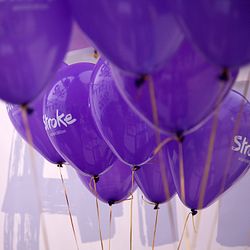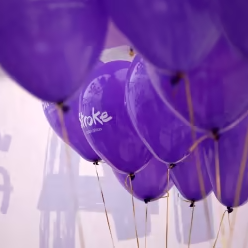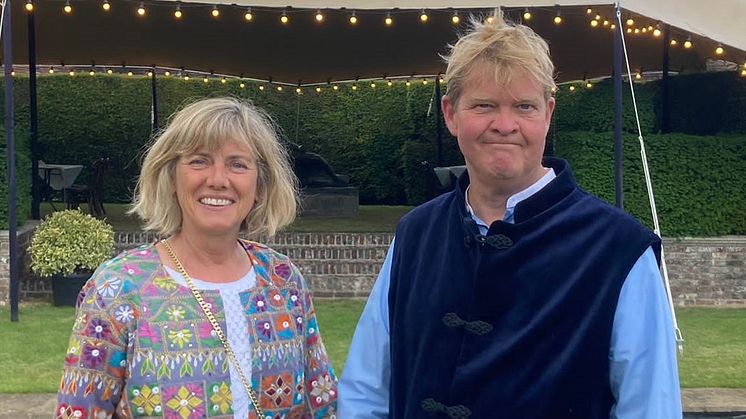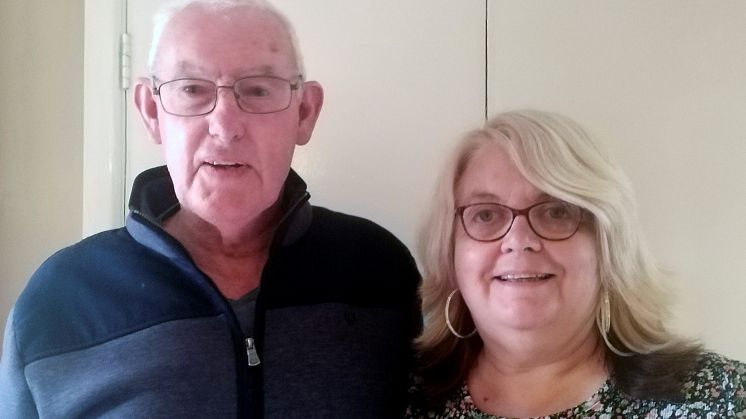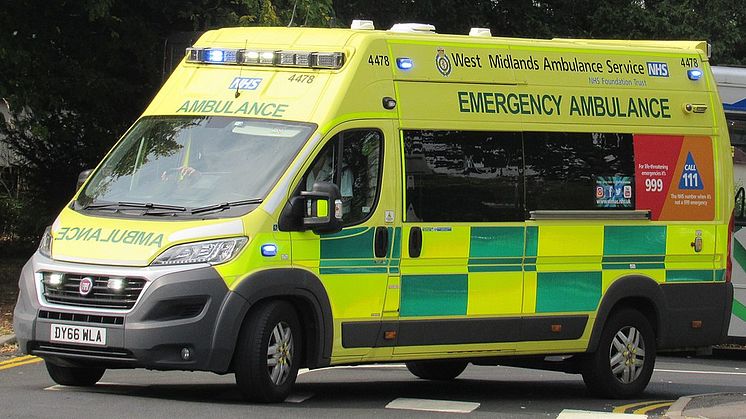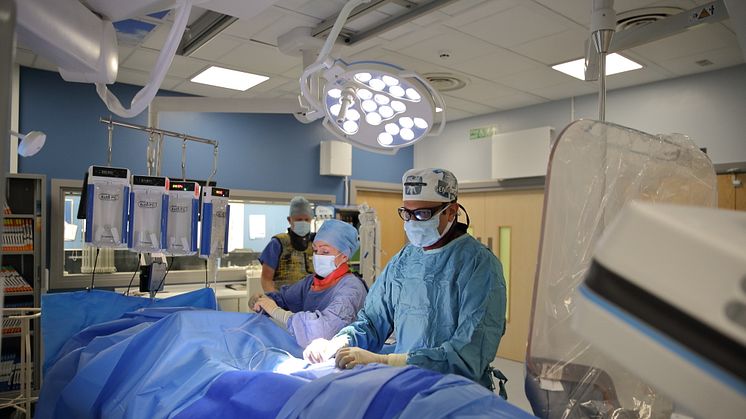
Press release -
Over 47,000 stroke patients to ‘miss out on a miracle treatment’
- 47,112 stroke patients to miss out on miracle treatment over next seven years1
- A quarter (28%) of those who would benefit currently receive treatment2
- Treating all suitable patients would save the health and care system £73 million per year3
A new report by the Stroke Association released today warns that, if the thrombectomy rate stays at 2020/21 levels, 47,112 stroke patients in England would miss out on the game changing acute stroke treatment, mechanical thrombectomy, over the length of the newly revised NHS Long Term Plan1. This year, NHS England missed its original target to make mechanical thrombectomy available to all patients for whom it would benefit – only delivering to 28% of all suitable patients by December 20212.
The Stroke Association’s ‘Saving Brains’ report calls for a 24/7 thrombectomy service, which could cost up to £400 million4. But treating all suitable strokes with thrombectomy would save the NHS £73 million per year3. Stroke professionals quoted in the report cite insufficient bi-plane suites, containing radiology equipment, as a barrier to a 24/7 service.
Mechanical thrombectomy is a procedure whereby a stent is used to manually remove large stroke-causing blood clots from the brain via a catheter inserted into the patient’s groin. The procedure vastly reduces disability and has been known to reduce hospital stay by a large number of months, with some patients being able to leave the next day, rather than spending months in in-patient rehab. The procedure has been described as one of the most effective procedures ever discovered.
Thrombectomy rates vary across the country. Almost 8% of stroke patients receive thrombectomy in London, compared to 0-3% in other parts of the country5. Despite stroke striking at any time and urgent treatment being critical, only a quarter (25%) of thrombectomy centres operate 24/7 services. Almost half (42%) only operate Monday to Friday, during office hours1.
The Stroke Association is calling for:
- The Treasury to provide urgent funding for thrombectomy in the Autumn Budget 2022, for infrastructure, equipment, workforce training and support, targeting both thrombectomy centres and referring stroke units.
- Department of Health and Social Care to develop a sustainable workforce plan to fill the gaps in qualified staff.
- NHS England to address challenges in transfer to and between hospitals in its upcoming Urgent & Emergency Care Plan.
- Putting innovation - such as artificial intelligence (AI) imaging software and video triage in ambulances - into practice.
Juliet Bouverie, Chief Executive of the Stroke Association said: “Thrombectomy is a miracle treatment that pulls patients back from near-death and alleviates the worst effects of stroke. It’s shocking that so many patients are missing out and being saddled with unnecessary disability. Plus, the lack of understanding from government, the NHS and local health leaders about the brain saving potential thrombectomy is putting lives at risk. There are hard-working clinicians across the stroke pathway facing an uphill struggle to provide this treatment and it’s time they got the support they need to make this happen. It really is simple. Thrombectomy saves brains, saves money and changes lives; now is the time for real action, so that nobody has to live with avoidable disability ever again.
“There is an unacceptable postcode lottery of stroke treatment, at a time when tackling health inequalities is a key priority for the government and NHS. Rates are rising gradually due to sustained efforts from national and local stroke teams, but progress is far slower than it needs to be. Tens of thousands will miss out, if rates stay the same as in 2020/21. NHS England’s original target was missed by a long way and we need to see proper efforts being made to make sure we’re not in the same position in 2029.
“Global clinical trials have proven thrombectomy’s efficacy and cost effectiveness multiple times over, yet we haven’t seen any real change. This is incredibly short sighted. A small investment, could save the NHS billions of pounds and that’s before we even start to think of the life-changing benefit to stroke patients.”
The report highlights staffing shortages and estimates that to achieve universal 24/7 service would require doubling the number of Interventional Neuroradiologists (INRs) in the workforce.
- 52% of stroke units in England have a stroke consultant vacancy, which remain unfilled for an average of 18 months6
- Only 46% of stroke units meet the minimum recommended staffing levels for senior nurses 6
- There are only 106 professionals who can perform thrombectomy in England (~4 per centre)1
Juliet continues: “NHS England missed its target and it will miss this target again and again unless we see proper investment into making this happen. We have known for years that a thrombectomy service requires capital funding. This never came. We have seen lengthy vacancies lists for stroke clinicians. No plan was made to fill the gaps. Making capital funding available and having a proper workforce plan are the best places government and the NHS can start to make sure that everyone can have a thrombectomy when they need one."
The Stroke Association report also finds that thrombectomy rates are being kept low by lengthy ambulance response times, lengthy handovers and delayed inter-hospital transfers. The report outlines that:
- For every 10 minutes of delay, the procedure has a 1% reduction in chance of patient benefit7
- For every minute a stroke goes untreated, 1.9 million brain cells die8
- 13.2% of strokes are fatal2
- Two-thirds of stroke survivors leave hospital with a disability9
The Stroke Association also calls for local systems to act on their Thrombectomy Quality Reviews to solve pathway issues holding back improving their thrombectomy rate.
- There are over 75,000 strokes in England every year.
- Approx. 10% of all stroke patients would benefit from a thrombectomy10
- 39% of thrombectomy patients experience reduced disability as a result of the procedure11.
- Thrombectomy can be performed up to 24 hours after a stroke, but it is most effective in the first six hours12.
Prof. Martin James, Consultant Stroke Physician at the Royal Devon & Exeter Hospital and a Clinical Trustee of the Stroke Association, said: “Thrombectomy really is a game-changing treatment, yet the number of people receiving the treatment in the UK remains much lower than elsewhere in Europe, and has been only slowly increasing over recent years. At this rate, it won't be available to all those who could benefit for many years to come. We need to ensure that thrombectomy is available to people with stroke wherever and whenever they need it, and that will require a big investment in people and equipment for the NHS. That sort of investment is long overdue and is urgently needed, and will change many lives for the better and save money.”
The Stroke Association are also calling on the public to sign an open letter calling on UK Government to act on the recommendations in our Saving Brains report, and make thrombectomy available as soon as possible, 24 hours a day, 7 days a week, for everyone who needs it. Sign the open letter here: https://takeaction.stroke.org.uk/page/106322/petition/1?ea.tracking.id=mediarelease
ENDS
References
1Stroke Association Saving Brains (2022). If thrombectomy rates stayed at 2020/21 levels, 47,112 patients will miss out on the procedure by 2029/30.
2 Sentinel Stroke National Audit Programme results Jan-March 2022 https://www.strokeaudit.org/results/Clinical-audit/National-Results.aspx
3European Stroke Journal, Estimating the number of UK stroke patients eligible for endovascular thrombectomy, http://journals.sagepub.
com/doi/abs/10.1177/2396987317733343
4Wolfe, C et al. King’s College London, Stroke pathway – Evidence Base Commissioning – An Evidence Review (December, 2020) Available: https://kclpure.kcl.ac.uk/portal/en/publications/stroke-pathway--evidence-base-commissioning--an-evidencereview(813067c2-1cc2-4cd1-9eaf-93eb0d72dd40).html
5Sentinel Stroke National Audit Programme annual portfolio 2020/21
6Sentinel Stroke National Audit Programme Acute Organisational Audit 2021
7 https://www.thelancet.com/journals/lancet/article/PIIS0140-6736
8 Jeffrey L. Saver, MD (January 2006) Time Is Brain—Quantified, https://www.ahajournals.org/doi/pdf/10.1161/01.str.0000196957.55928.ab
9Adamson J, Beswick A, Ebrahim S (2004). Is stroke the most common cause of disability? Journal of Stroke and Cerebrovascular Diseases 13:171-177
10McMeekin P, White P, James MA, Price CI, Flynn D, Ford GA. Estimating the number of UK stroke patients eligible for endovascular thrombectomy. Eur Stroke J. 2017;2(4):319-326.
11Stroke pathway — Evidence Base Commissioning — An Evidence Review. / Wolfe, Charles; Marshall, Iain; Rudd, Anthony; Rodgers, Helen; McKevitt, Christopher; Wang, Yanzhong; Wafa, Hatem; Skolarus, Lesli E. ; Bhalla, Ajay; Muruet Gutierrez, Walter; Emmett, Eva; Sommerville, Peter; Birns, Jonathan; Sackley, Catherine; Clarke, Stephanie; Hamidi, Fara. 2020.
12Stroke and transient ischaemic attack in over 16s: diagnosis and initial management
NICE guideline [NG128] Published: 01 May 2019 Last updated: 13 April 2022 https://www.nice.org.uk/guidance/ng128/chapter/recommendations#pharmacological-treatments-and-thrombectomy-for-people-with-acute-stroke
Topics
Categories
Regions
- Stroke strikes every five minutes in the UK and it changes lives in an instant.
- The Stroke Association is a charity working across the UK to support people to rebuild their lives after stroke. We believe that everyone deserves to live the best life they can after stroke. From local support services and groups, to online information and support, anyone affected by stroke can visit stroke.org.uk or call our dedicated Stroke Helpline on 0303 3033 100 to find out about support available locally.
- Our specialist support, research and campaigning are only possible with the courage and determination of the stroke community and the generosity of our supporters. With more donations and support, we can help rebuild even more lives.
- You can follow us on Twitter, Facebook and Instagram.








